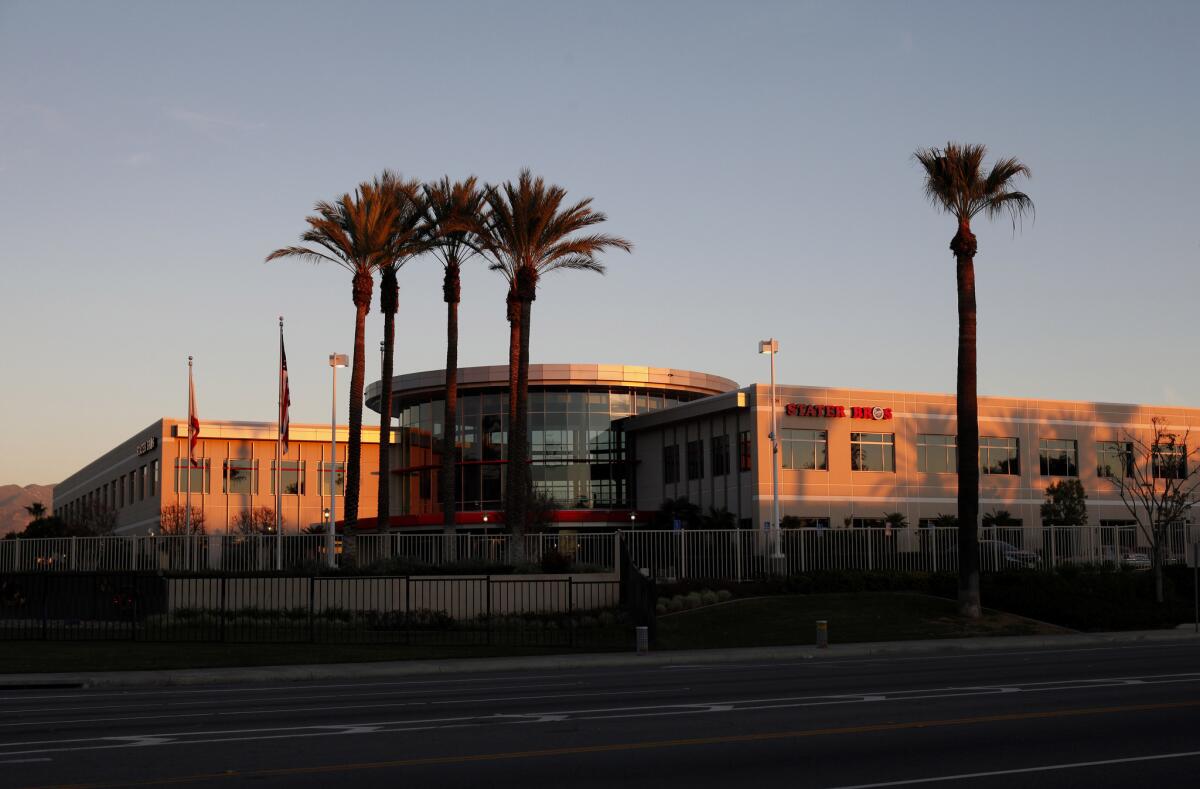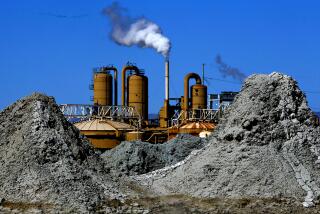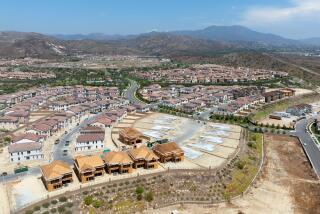Inland Empire economy projected to be among fastest-growing in U.S.

The Inland Empire east of Los Angeles is projected to be one of the fastest-growing large metropolitan area economies in the country over the next six years, according to a forecast released Friday at the United States Conference of Mayors.
The economic study prepared by IHS Global Insight estimates that economic growth in the Riverside/San Bernardino/Ontario economy will be the highest in California, for an average of 4.2% through 2020. Growth in the Inland Empire is projected to be ahead of other fast-growing metros, including the Phoenix and Houston areas.
The report also estimates that the Bakersfield area will be among the top 10 fastest-growing large metropolitan areas, a group that includes the top 100 largest regions.
The Los Angeles/Orange County region is projected to grow more slowly, the report found, at an average of about 2.9% through 2020 -- less than other large California metro areas such as San Jose, Sacramento and San Francisco.
Jim Diffley, a senior director with IHS Economics who prepared the report, said that part of the Inland Empireâs rapid projected growth comes after the huge real estate bust during the mortgage meltdown and the Great Recession.
âThe high growth rates are partly a reflection of how deep they fell in the downturn,â Diffley said.
But he added that the area has the benefit of being close to L.A.âs enormous economy, with more space.
âYou expect more growth in California to happen inland than on the coast, just because of the availability of land,â Diffley said. âRiverside, as opposed to further north in the Central Valley, offers attractiveness with the proximity to the L.A. area, and you still get trade there, with China and the Pacific.â
Tom Freeman, the commissioner of Riverside Countyâs economic development authority, pointed to large increases in agricultural trade, information technology and industrial commercial real estate as drivers of the areaâs rebound.
âWeâre smoking hot when it comes to people who need to do manufacturing and assembly, and also distribution,â he said. Still, he cautioned that lower tax revenues from the real estate downturn have put a crimp on local government budgets needed for an expanding population. âWe are still not out of this.â
Economic growth in the Los Angeles area is not expected to be as fast as other parts of the state because the metro economy is already so large (the second-largest behind the New York City metropolitan area, which is predicted to have slower growth, at 2.4%).
âWe donât have a depressed view of L.A. at all, itâs just slower growing,â said Diffley of IHS Global Insight. âItâs large, itâs congested, itâs expensive. Thereâs place for high value industry, but it doesnât have the same boost that the Bay Area gets from high tech and the information economy.â
Fastest Projected Economic Growth Among Top 100 Metro Areas (through 2020)
Austin-Round Rock-San Marcos, TX -- 4.4%
Raleigh-Cary, NC -- 4.3 %
Fayetteville-Springdale-Rogers, AR-MO -- 4.2%
Riverside-San Bernardino-Ontario, CA -- 4.2%
Durham-Chapel Hill, NC --4.1%
Orlando-Kissimmee-Sanford, FL -- 4.1%
Bakersfield-Delano, CA -- 4.1%
Phoenix-Mesa-Glendale, AZ -- 4.0%
Houston-Sugar Land-Baytown, TX --4.0%
McAllen-Edinburg-Mission, TX --4.0%
Fastest Projected Growth In Large California Metro Areas (through 2020)
Riverside-San Bernardino-Ontario, CA -- 4.2%
Bakersfield-Delano, CA -- 4.1%
San Jose-Sunnyvale-Santa Clara, CA -- 3.9%
Sacramento--Arden-Arcade--Roseville, CA -- 3.8%
San Diego-Carlsbad-San Marcos, CA -- 3.5%
Fresno, CA -- 3.3%
Oxnard-Thousand Oaks-Ventura, CA -- 3.3%
San Francisco-Oakland-Fremont, CA -- 3.2%
Los Angeles-Long Beach-Santa Ana, CA -- 2.9%
More to Read
Inside the business of entertainment
The Wide Shot brings you news, analysis and insights on everything from streaming wars to production â and what it all means for the future.
You may occasionally receive promotional content from the Los Angeles Times.











